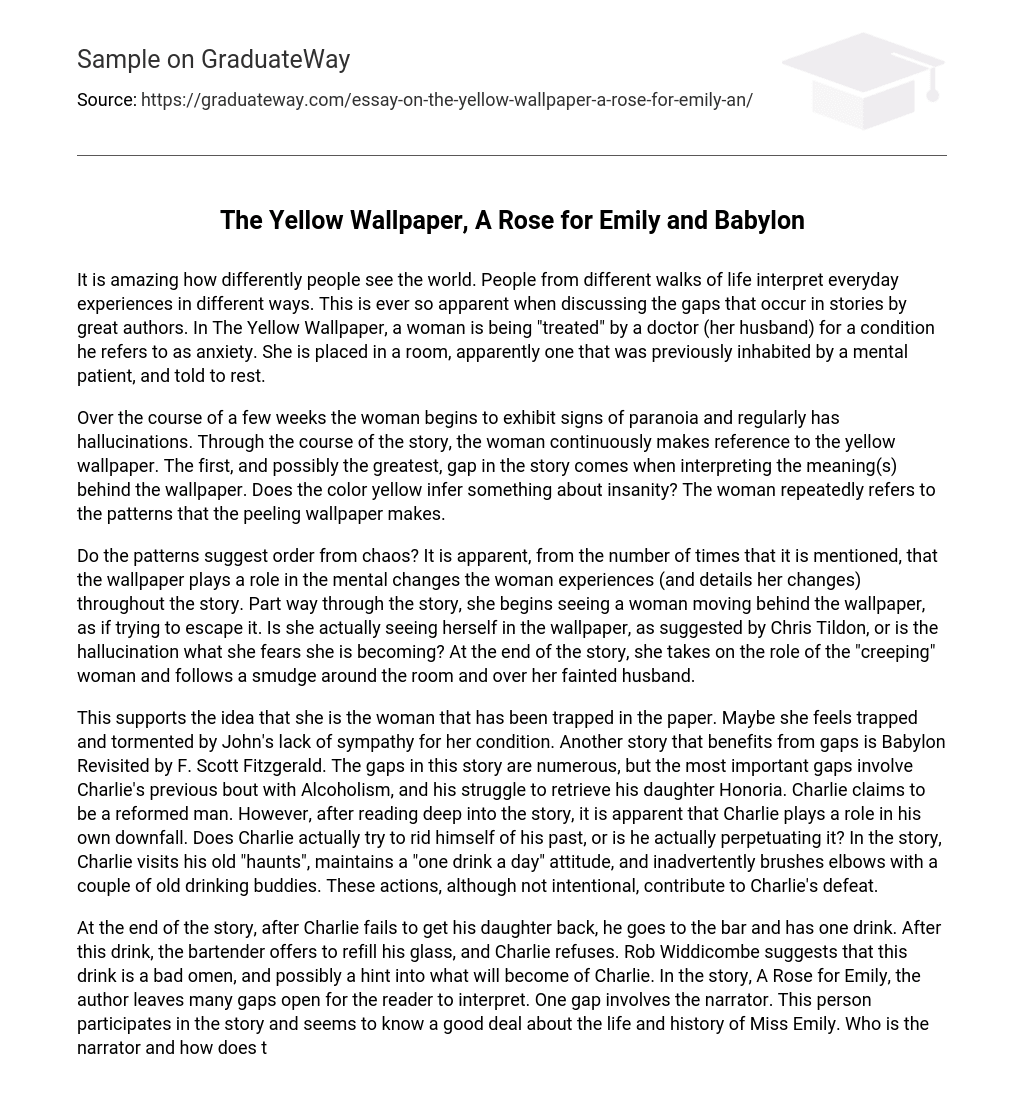The diversity in perspectives is truly fascinating. Individuals from various backgrounds perceive everyday occurrences through their own unique lens. This becomes particularly evident when analyzing the gaps present in narratives crafted by renowned writers. In the case of “The Yellow Wallpaper,” a female protagonist is subjected to the “care” of her husband, who doubles as her physician, to alleviate her supposed anxiety. She is confined to a room that was previously occupied by a mentally unwell individual and instructed to recuperate.
Throughout the story, the woman gradually develops paranoia and frequently experiences hallucinations over a few weeks. She consistently mentions the yellow wallpaper, creating a significant gap in the story as to its interpretation and possible connection to insanity. The woman repeatedly comments on the patterns created by the peeling wallpaper.
The patterns in the wallpaper hint at order emerging from chaos. It becomes evident, through its frequent mention, that the wallpaper has a significant impact on the woman’s mental state and documents her transformations over the course of the narrative. In the middle of the story, she starts observing a woman moving behind the wallpaper, appearing to be trying to break free from it. Does she truly see her own reflection in the wallpaper, as proposed by Chris Tildon, or does this hallucination represent her fear of turning into someone she dreads? Towards the end of the tale, she assumes the role of the “creeping” woman and trails a stain across the room and onto her unconscious husband.
This supports the idea that she is the woman who has been trapped in the paper. Perhaps she feels trapped and tormented by John’s lack of sympathy for her condition. Another story that benefits from gaps is Babylon Revisited by F. Scott Fitzgerald. The gaps in this story are numerous, but the most significant gaps involve Charlie’s past struggle with Alcoholism and his efforts to regain custody of his daughter Honoria. Charlie claims to have changed for the better. However, upon closer examination of the story, it becomes clear that Charlie plays a role in his own downfall. Does Charlie truly attempt to escape his past, or is he actually perpetuating it? In the story, Charlie frequents his old “hangouts,” maintains a daily “one drink” policy, and unintentionally crosses paths with a few old drinking companions. Although these actions are not deliberate, they contribute to Charlie’s ultimate defeat.
After failing to retrieve his daughter, Charlie visits a bar and consumes one drink. The bartender offers another refill, but Charlie declines. Rob Widdicombe considers this drink as a negative sign, suggesting it may foreshadow Charlie’s fate. In “A Rose for Emily,” the author deliberately leaves gaps in the narrative to allow readers to interpret various aspects. One such gap pertains to the unidentified narrator who actively engages in the story and possesses extensive knowledge about Miss Emily’s life and past. The reader is left to wonder about the narrator’s identity and how they obtained such detailed information.
Additionally intriguing is the reason behind the killing of Emily’s beloved. The narrator provides accounts of Emily’s life, leaving it up to the reader to infer the motive. Was her fear of losing him a result of his non-membership in Southern aristocracy? Why was there no investigation into Homer’s disappearance? Evidently, the townspeople had a vested interest in Emily’s existence.
However, could this interest solely stem from Emily’s descent into the same societal position as the majority of the townspeople after her father’s demise? There are countless gaps in these three narratives. The writers grant the reader immense freedom when interpreting the stories. It is incumbent upon the reader to delve deeply and scrutinize the concealed implications. A fresh admiration for the stories arises from closely examining the occurrences and concepts that the author provides. This is what renders a story pleasurable.





